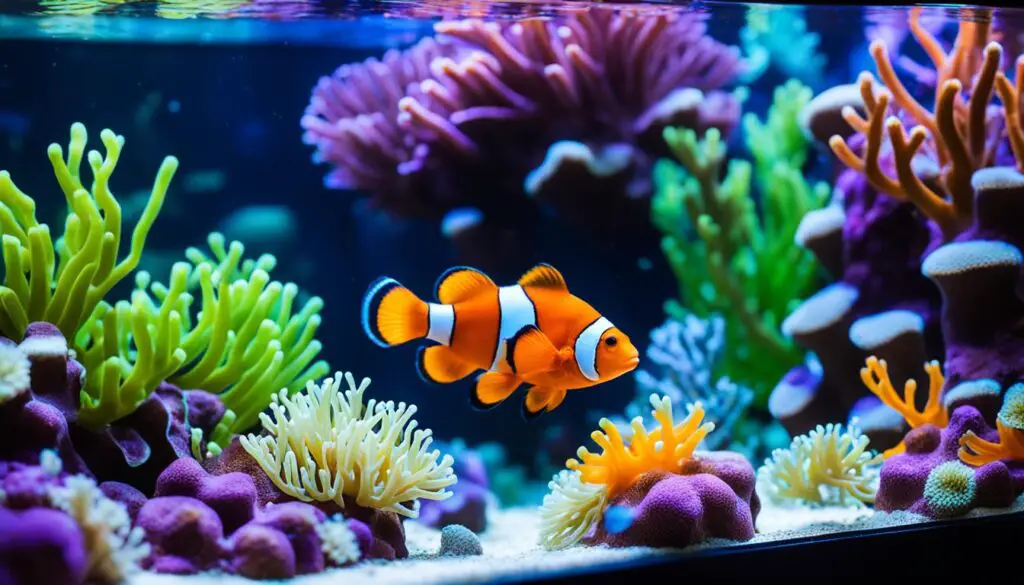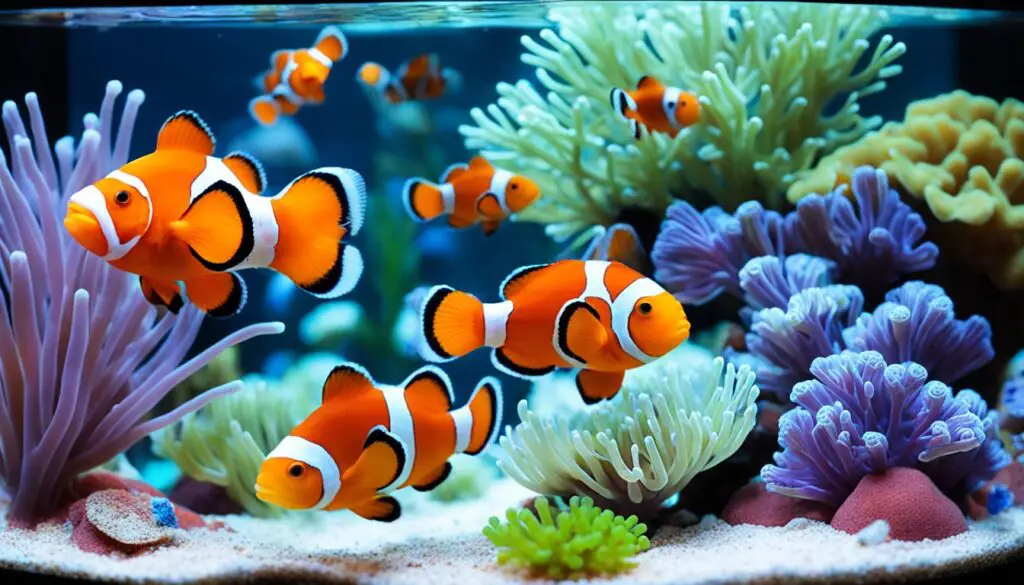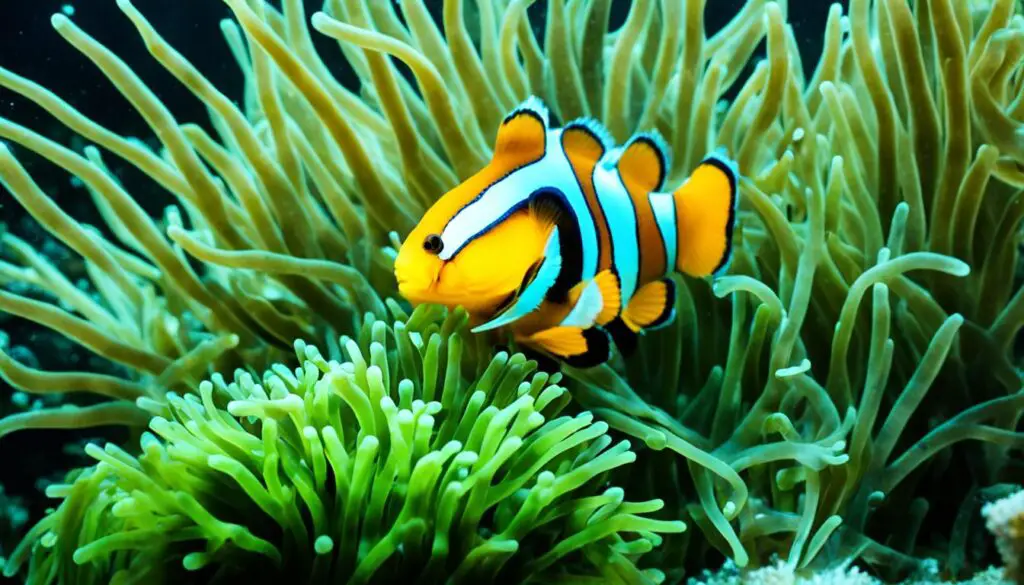Do Starfish Live Under Rocks
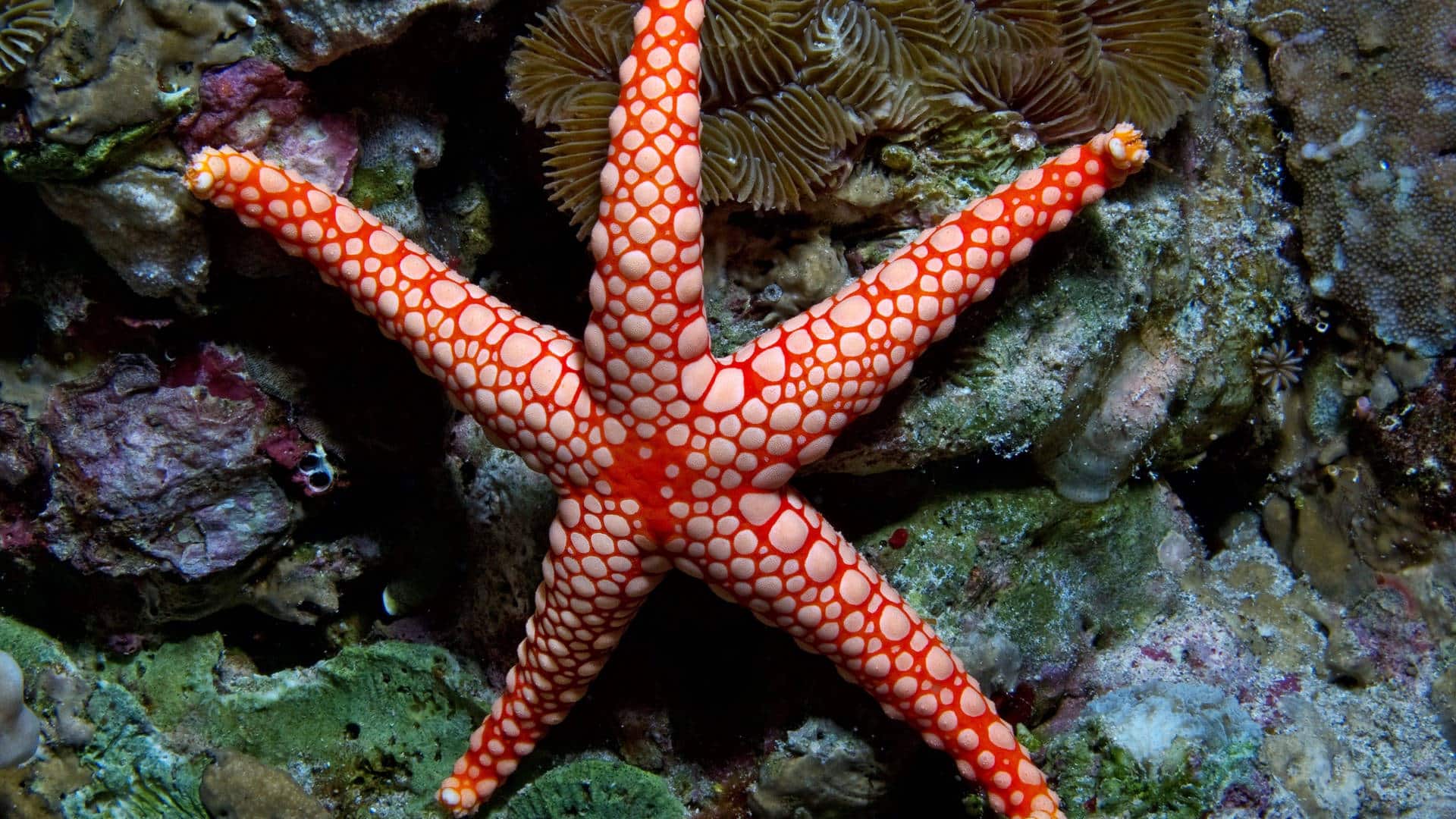
Introduction
Do Starfish Live Under Rocks: At first glance, one might assume that starfish, also known as sea stars, live solely in the open ocean, clinging to rocks and coral reefs. While this assumption holds true for many species of starfish, the world of marine biology is far more intricate.
Starfish inhabit a diverse range of marine environments, from rocky shorelines to sandy seabeds. Their adaptability and resilience have allowed them to colonize a variety of niches within the ocean ecosystem. Some species do indeed seek shelter beneath rocks, where they can find protection from predators and access to food sources like mollusks and other benthic organisms.
However, other starfish species thrive in different habitats, such as seagrass beds, tide pools, and even on soft sediments. Their lifestyles vary as much as their appearances, which can range from vibrant colors and intricate patterns to more subdued hues for camouflage.
Exploring the lives of starfish not only offers insight into the fascinating world of marine life but also serves as a reminder of the complexity of nature itself. This seemingly simple question about where starfish live highlights the diversity and wonder that lies beneath the surface of our oceans, inviting us to delve deeper into the mysteries of the natural world.
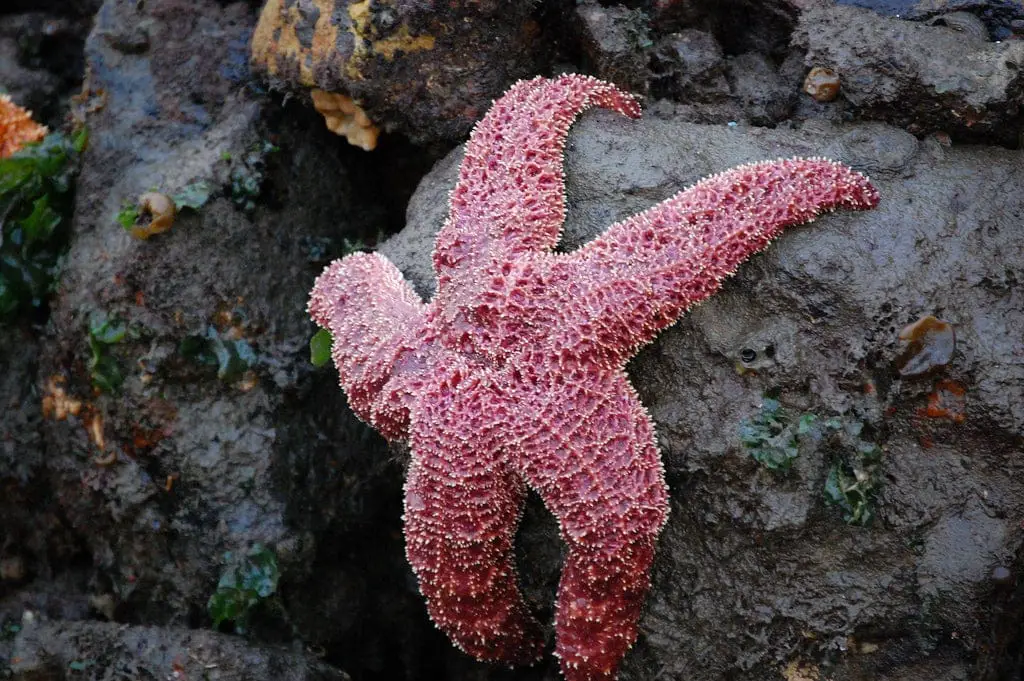
Does starfish live in or on a rock?
Sea stars live in the lower intertidal; they would dry out in the sun at low tide if they were in the upper parts. They can be found on rocks and in tidepools, which are holes, crevices, and depressions in rocks that trap seawater as the tide goes out.
While many people associate starfish with clinging to rocks in the intertidal zones or along coral reefs, the reality is more nuanced. Some species of starfish are indeed commonly found in close association with rocks. They use their tube feet to grip onto the substrate, which can include rocks, corals, and other hard surfaces. These starfish are often seen in tide pools or on rocky shorelines, where they navigate the ever-changing tides and waves.
These echinoderms exhibit a wide range of habitat preferences. Some species inhabit sandy seabeds, seagrass meadows, or soft sediments, where they may burrow or move about in search of food. Others can be found in deeper ocean waters, far from rocky shores.
In essence, the relationship between starfish and rocks is a variable one, reflecting the adaptability of these creatures to different environments. To understand where a particular species of starfish lives, one must consider its unique ecological niche and habitat preferences, making the study of starfish a fascinating exploration of marine biodiversity.
Do starfish stay on rocks?
Sea stars are sea creatures and live between the high and low tide lines. As the tide comes in, they will mostly be underwater, but they often get caught out during high tide and will cling to the shaded side of rocks and under sea weed waiting for the tide to return.
The behavior of starfish in relation to rocks varies among different species and is influenced by their ecological niche and habitat preferences. While it’s common to see some starfish clinging to rocks in intertidal zones or along coral reefs, not all starfish stay exclusively on rocks.
Some species of starfish are well adapted to living on rocks and are often found in such habitats. They use their tube feet and their adhesive properties to attach themselves firmly to the substrate, allowing them to withstand the forces of waves and tides. These rock-dwelling starfish can be seen grazing on algae or hunting for small prey in the crevices of rocks.
So, while it’s true that many starfish stay on rocks, it’s important to recognize that their habitat preferences are not universal. Their choice of habitat is shaped by a complex interplay of factors, including food availability, protection from predators, and the specific conditions of their environment. As a result, the behavior of starfish in relation to rocks is a reflection of their incredible adaptability to diverse marine ecosystems.
Do starfish stick to rocks?
At the tip of each tube foot is a small suction cup, which can be attached to objects. Tube feet enable the starfish to grasp and manipulate prey, to move, and to cling to rocks and other hard surfaces as it creeps along.
Yes, starfish have a remarkable ability to stick to rocks and other substrates, thanks to their unique anatomical features. Starfish are marine invertebrates belonging to the phylum Echinodermata. They are equipped with tube feet, which are small, flexible, and suction-cup-like structures located on the underside of their arms. These tube feet serve various functions, including locomotion and attachment.
When a starfish wants to stick to a rock or any other surface, it extends its tube feet and creates a seal with the substrate. It then uses a combination of muscular contractions and hydraulic pressure to create suction, effectively securing itself in place. This adhesive ability allows starfish to withstand the forces of waves and currents, preventing them from being swept away.
While starfish are often associated with rocks in intertidal and subtidal zones, it’s important to note that their adaptability extends beyond rocky habitats. Some species of starfish inhabit sandy seabeds, soft sediments, seagrass meadows, and even deeper ocean waters, demonstrating their ability to thrive in various marine environments.
Where does a starfish live?
Oceans
There are around 1,600 different species of starfish living in the world’s oceans, where they occupy every type of habitat including tidal pools, rocky shores, sea grass, kelp beds and coral reefs. Some kinds of starfish are even found on sandy seabeds 9,000 metres deep!
Starfish, also known as sea stars, inhabit a diverse range of marine environments, showcasing their adaptability to various niches within the ocean ecosystem. While they are commonly associated with rocky shorelines and coral reefs, their habitat preferences are not limited to these areas.
Rocky Shorelines and Coral Reefs: Many species of starfish are indeed found clinging to rocks in intertidal zones or along coral reefs. Here, they use their tube feet to grip onto the substrate, allowing them to withstand the waves and tides. These starfish are often seen grazing on algae or hunting for small prey in the crevices of rocks.
Sandy Seabeds: Some starfish species prefer sandy seabeds, where they may burrow or move about in search of food. Their ability to move on sandy substrates is facilitated by their tube feet and can be quite impressive.
Seagrass Meadows: Certain starfish species inhabit seagrass meadows, where they can find shelter and abundant prey. They may use seagrass blades for protection and camouflage.
Soft Sediments: In addition to rocks and sand, some starfish live in soft sediments on the ocean floor, where they bury themselves or move around in pursuit of food.
Deep Ocean Waters: While most starfish are found in shallow waters, some species inhabit deeper parts of the ocean, showcasing their adaptability to different depths and environments.
What do starfish fall under?
Starfish or sea stars are star-shaped echinoderms belonging to the class Asteroidea (/ˌæstəˈrɔɪdiə/). Common usage frequently finds these names being also applied to ophiuroids, which are correctly referred to as brittle stars or basket stars.
Starfish, also known as sea stars, belong to the biological classification known as the phylum Echinodermata. Echinoderms are a diverse group of marine invertebrates characterized by their radial symmetry, meaning their body parts are arranged around a central point like the spokes of a wheel. Other echinoderms include sea urchins, sea cucumbers, and brittle stars.
Within the phylum Echinodermata, starfish are further classified into the class Asteroidea. This class includes a wide variety of starfish species that exhibit various shapes, sizes, and colors. Starfish are renowned for their distinctive five-arm radial symmetry, although some species can have more arms.
Starfish are fascinating creatures known for their tube feet, which they use for locomotion, feeding, and attachment to surfaces. They also have a unique water vascular system that aids in these functions.
While often called “starfish,” it’s important to note that they are not fish. The term “starfish” is somewhat misleading, as these animals are not fish at all but are rather echinoderms, closely related to sea urchins and sea cucumbers.
Do starfish sleep under rocks?
Not according to Blue Planet Aquarium. However, there is a “species of starfish that will hide under rocks and opportunistically wait for their prey.
Starfish, or sea stars, do not sleep in the way humans or some other animals do. They lack the complex nervous system and brain required for sleep patterns as we understand them. Instead, starfish exhibit behaviors related to their physiology and environmental conditions.
Starfish are primarily active during the day, especially when it comes to feeding and locomotion. They use their tube feet to move, explore, and search for food, often relying on their sense of touch and chemical cues.
At night or when environmental conditions become unfavorable, starfish may become less active and seek shelter. This shelter can include crevices in rocks or other suitable hiding spots, which can provide protection from predators and turbulent waters.
Additionally, starfish are ectothermic, meaning their body temperature is regulated by the surrounding environment. As their metabolism slows down in cooler conditions, they may become less active during the night or in colder water.
Starfish do not experience sleep as humans do but exhibit behavioral changes in response to environmental factors and their own physiological needs. Their activity levels are influenced by factors such as light, water temperature, and their search for food and safety.
Do starfish typically live under rocks in the ocean?
Yes, some species of starfish can be found under rocks in their natural habitats. They often seek shelter and protection under rocks or crevices, especially during low tide or when they are not actively hunting for food.
Starfish, also known as sea stars, can be found in a variety of habitats in the ocean, and while some species are commonly associated with living under rocks, it’s important to note that not all starfish fit this description. The habitat preferences of starfish can vary widely based on their species and ecological niche.
Under Rocks: Many species of starfish are indeed found in association with rocks, particularly in intertidal zones and along rocky coastlines. They use their tube feet to cling to the substrate and can often be seen moving across or adhering to rocks.
Sandy Seabeds: Some starfish species prefer sandy seabeds, where they may burrow or move about in search of prey. Their ability to move on sand is facilitated by their tube feet, which help them crawl and feed.
Seagrass Meadows: Certain starfish species inhabit seagrass meadows, where they can find shelter and abundant prey. They may use seagrass blades for protection and camouflage.
Soft Sediments: In addition to rocks and sand, some starfish live in soft sediments on the ocean floor, where they bury themselves or move around in pursuit of food.
Deep Ocean Waters: While most starfish are found in shallow waters, some species inhabit deeper parts of the ocean, showcasing their adaptability to different depths and environments.
While many starfish live under rocks in specific circumstances, they are not limited to this habitat. The diverse range of habitats they occupy demonstrates their adaptability and ability to thrive in various marine environments.
Can I find starfish under rocks in aquariums?
In aquarium settings, starfish are often provided with suitable substrate, which may include rocks, to mimic their natural environment. Some species may indeed choose to position themselves under rocks or within crevices for comfort and security.
In aquariums, it’s not uncommon to find starfish placed in settings that mimic their natural habitats, including areas with rocks. Whether you can find starfish under rocks in an aquarium depends on several factors:
- Aquarium Design: Many public aquariums and well-maintained private aquariums create habitats that resemble the natural environments of the animals they house.
- Species Selection: The type of starfish in the aquarium also plays a role. Some species of starfish are more commonly associated with rocky substrates in the wild, and these are more likely to be placed in rock-filled sections of the aquarium.
- Exhibit Layout: The design of the aquarium exhibit determines where and how starfish are displayed. Some exhibits may focus on replicating rocky tide pools, while others might simulate sandy seabeds or coral reef environments.
- Exhibit Size: The size of the aquarium can also affect whether you’ll find starfish under rocks. In larger exhibits, starfish may have more space and various substrates to explore, including rocky areas.
- Behavior: Starfish exhibit a range of behaviors in response to their environment, so whether they are actively under rocks may vary throughout the day.
To see starfish under rocks in an aquarium, visit reputable facilities with well-designed exhibits that aim to provide a naturalistic experience for both the animals and visitors. Keep in mind that the visibility of starfish under rocks may also depend on the time of day and their activity patterns, as they can be more or less active at different times.
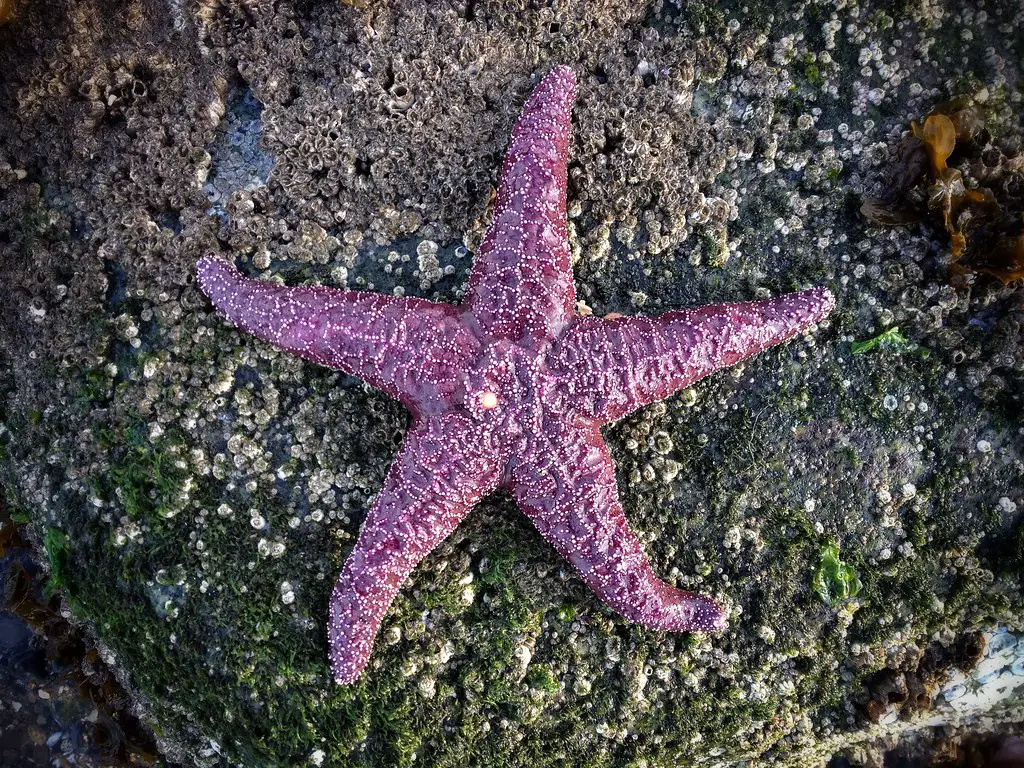
Conclusion
While some starfish species do indeed seek refuge under rocks in the intricate tapestry of marine ecosystems, the broader truth is that starfish occupy a rich spectrum of habitats, showcasing their remarkable adaptability.
This exploration into the lives of starfish underscores the importance of approaching scientific inquiries with an open mind and a spirit of curiosity. It teaches us that nature rarely conforms to our simplistic expectations, and understanding it requires a nuanced perspective.
Furthermore, the study of starfish extends beyond their choice of habitat. It encompasses their intricate biology, their roles in maintaining ecosystem balance, and their vulnerability to environmental changes. As we peel back the layers of this intriguing marine species, we also uncover the interconnectedness of life in the ocean and its delicate balance, which is crucial for the health of our planet.
In essence, the question about starfish and rocks is not just about their dwelling preferences; it’s a gateway to a deeper appreciation of the diversity and complexity of life on Earth. It reminds us that our world is a place of wonder and constant discovery, where even seemingly simple questions can lead to profound insights about the intricate web of life that surrounds us.

